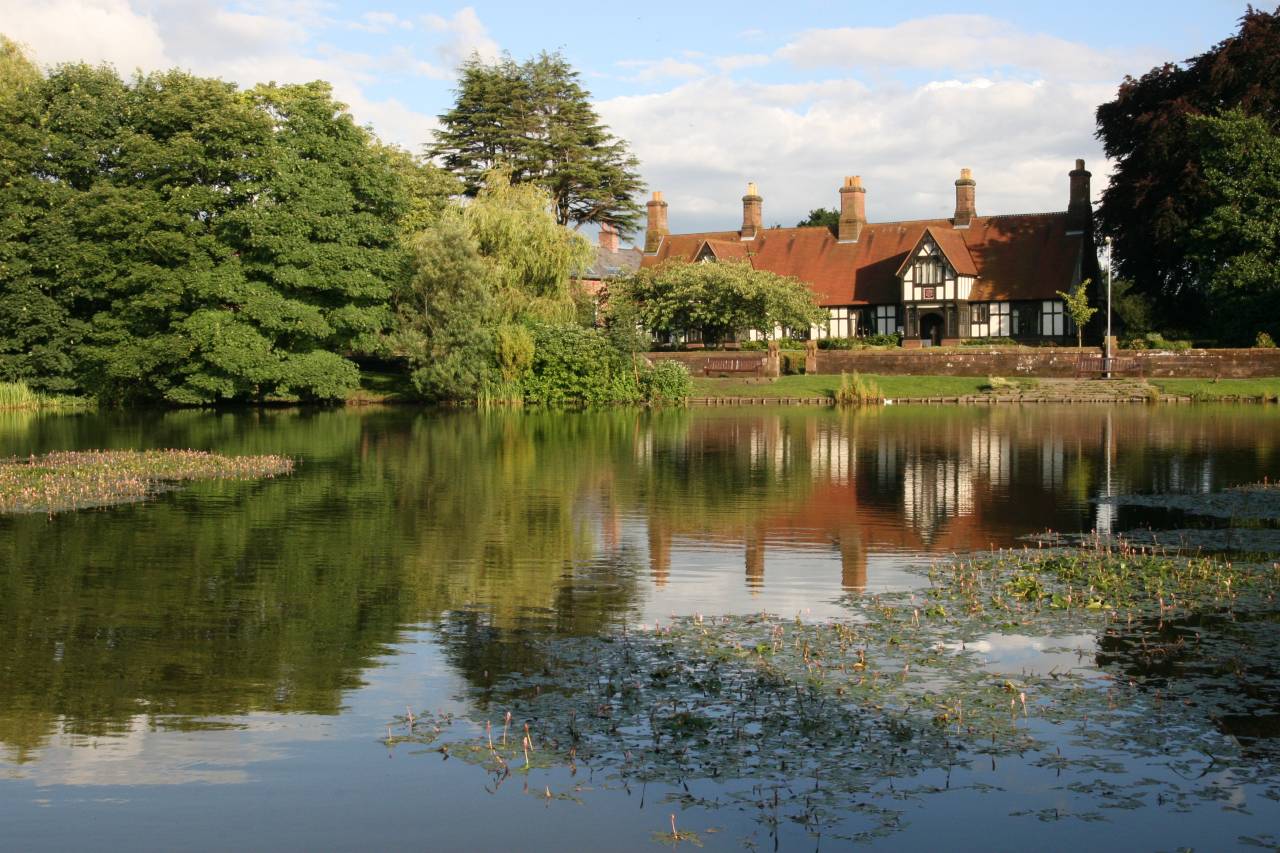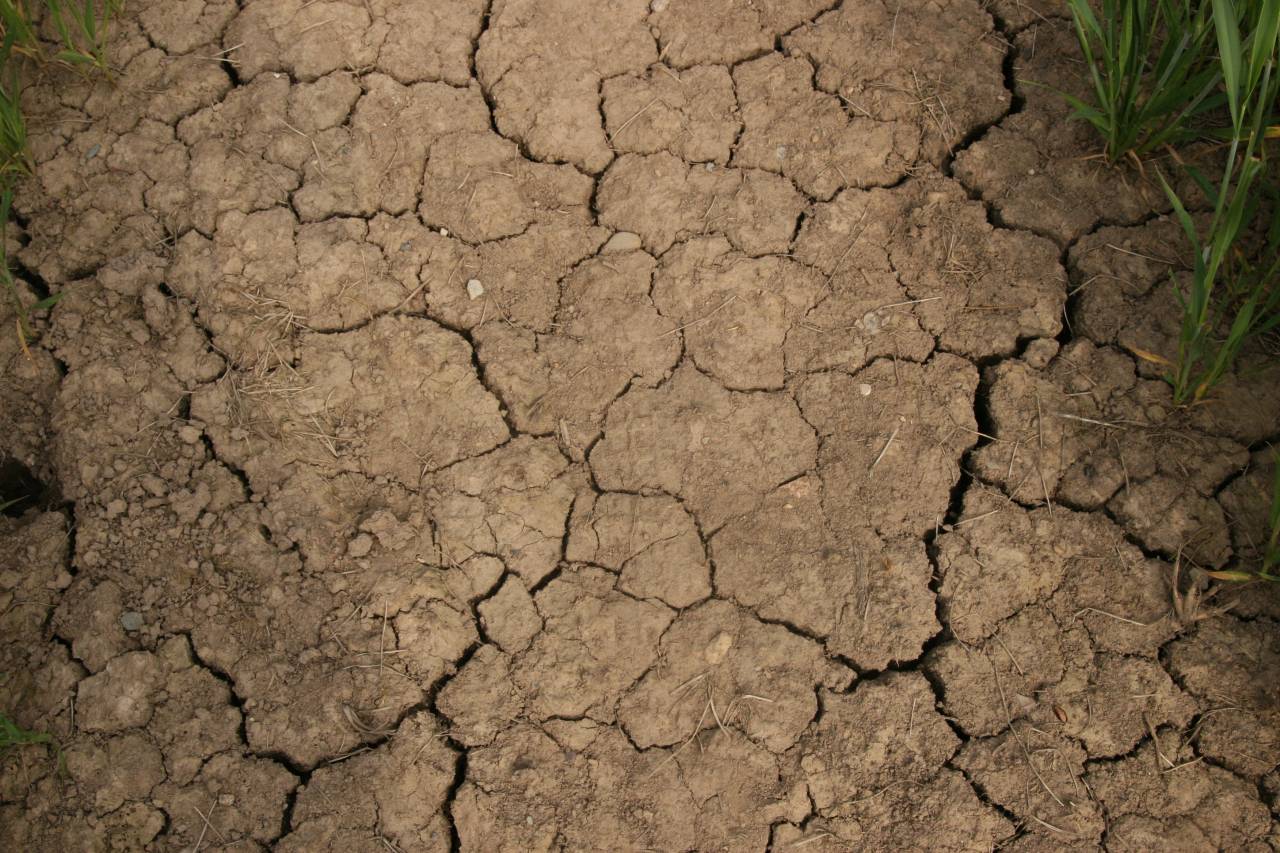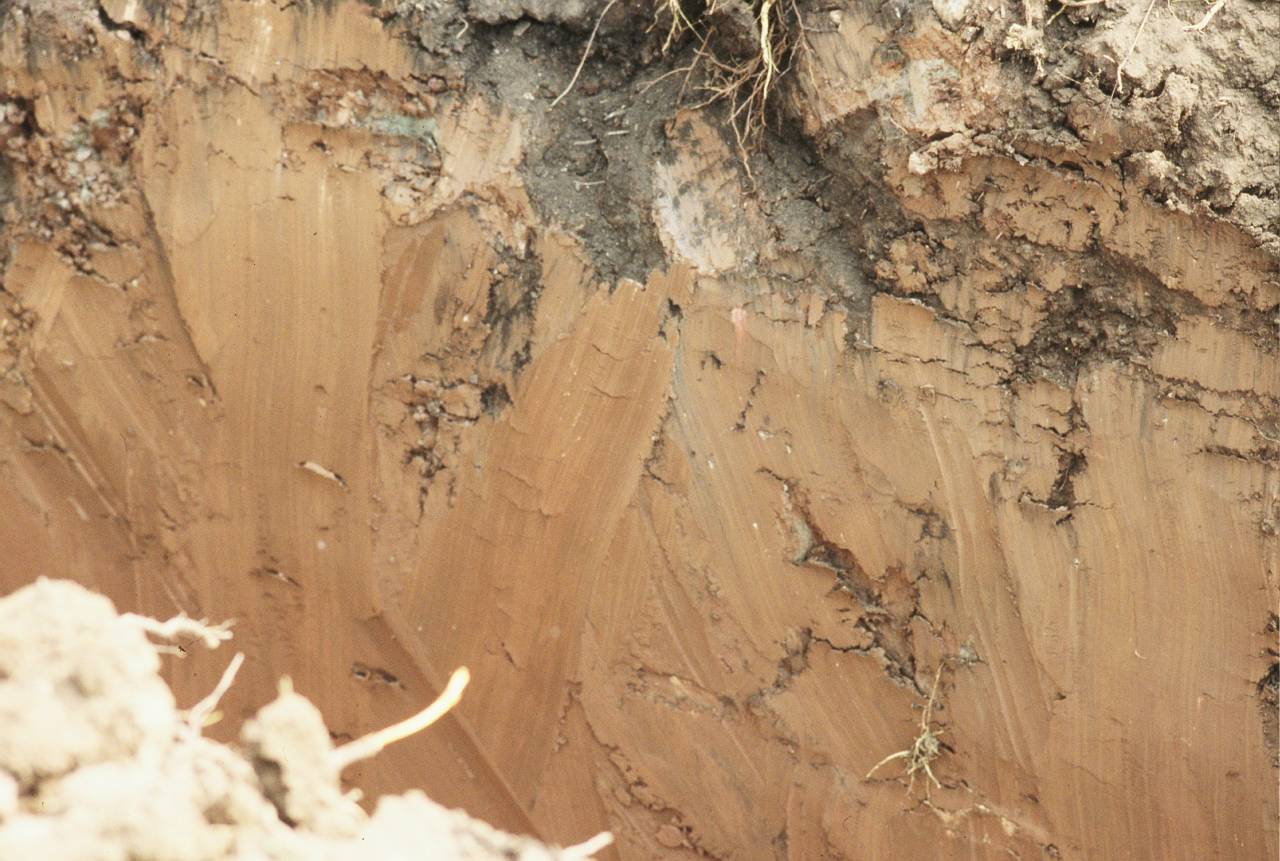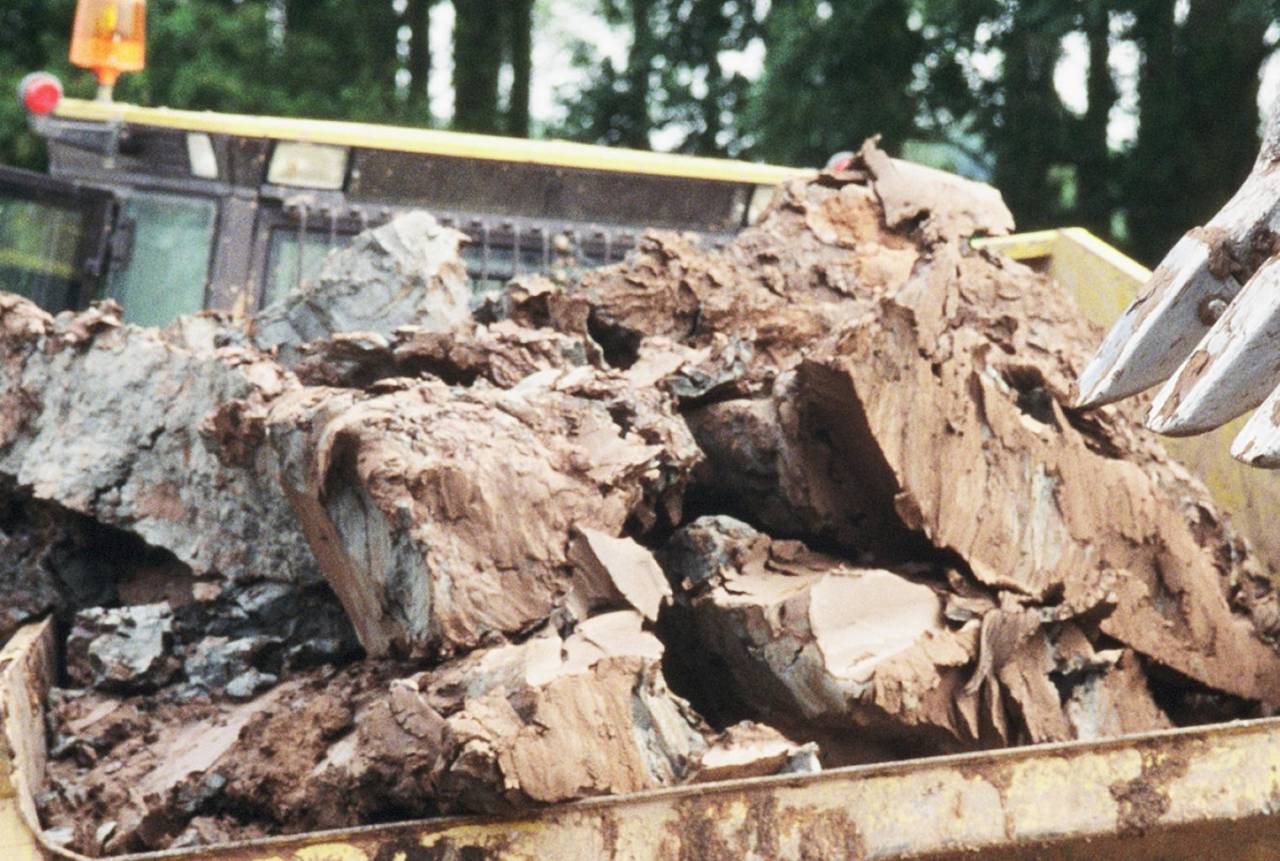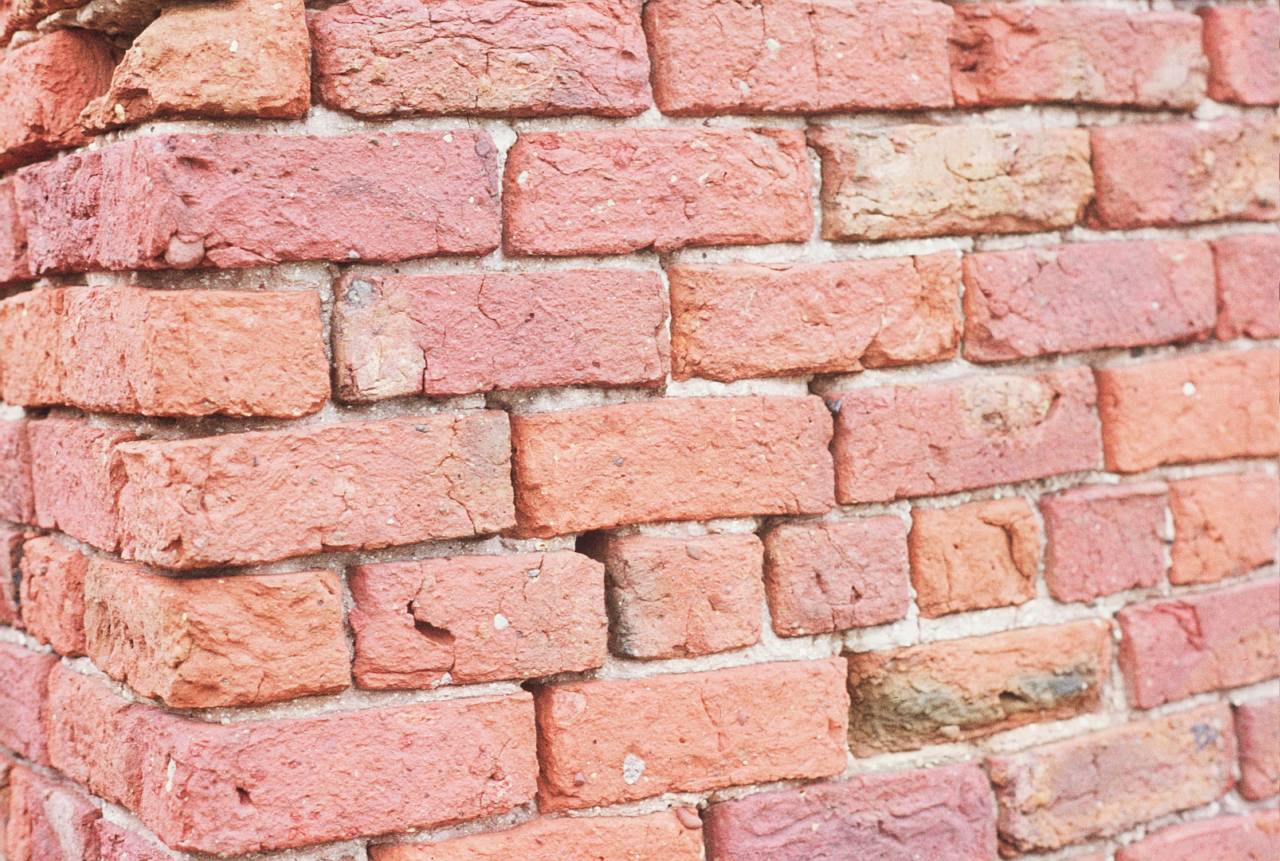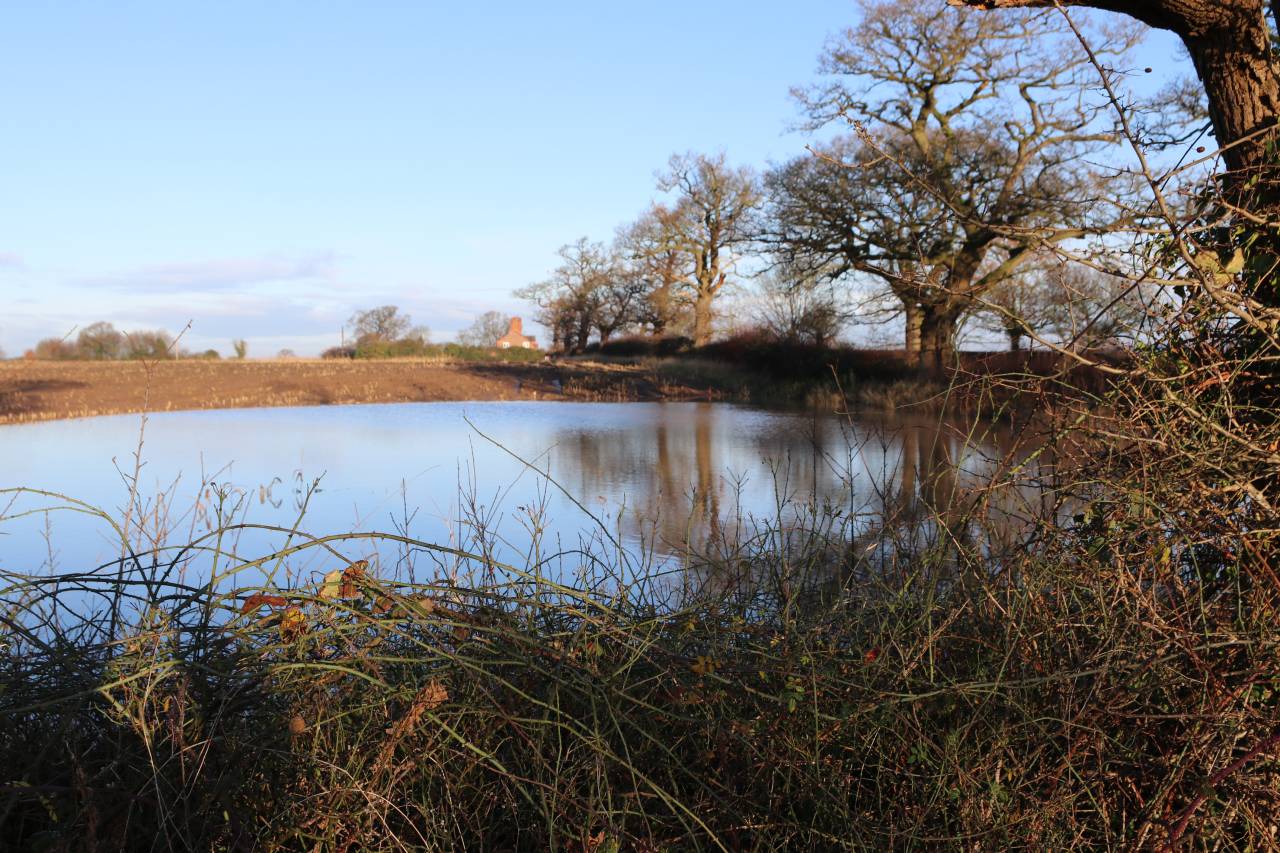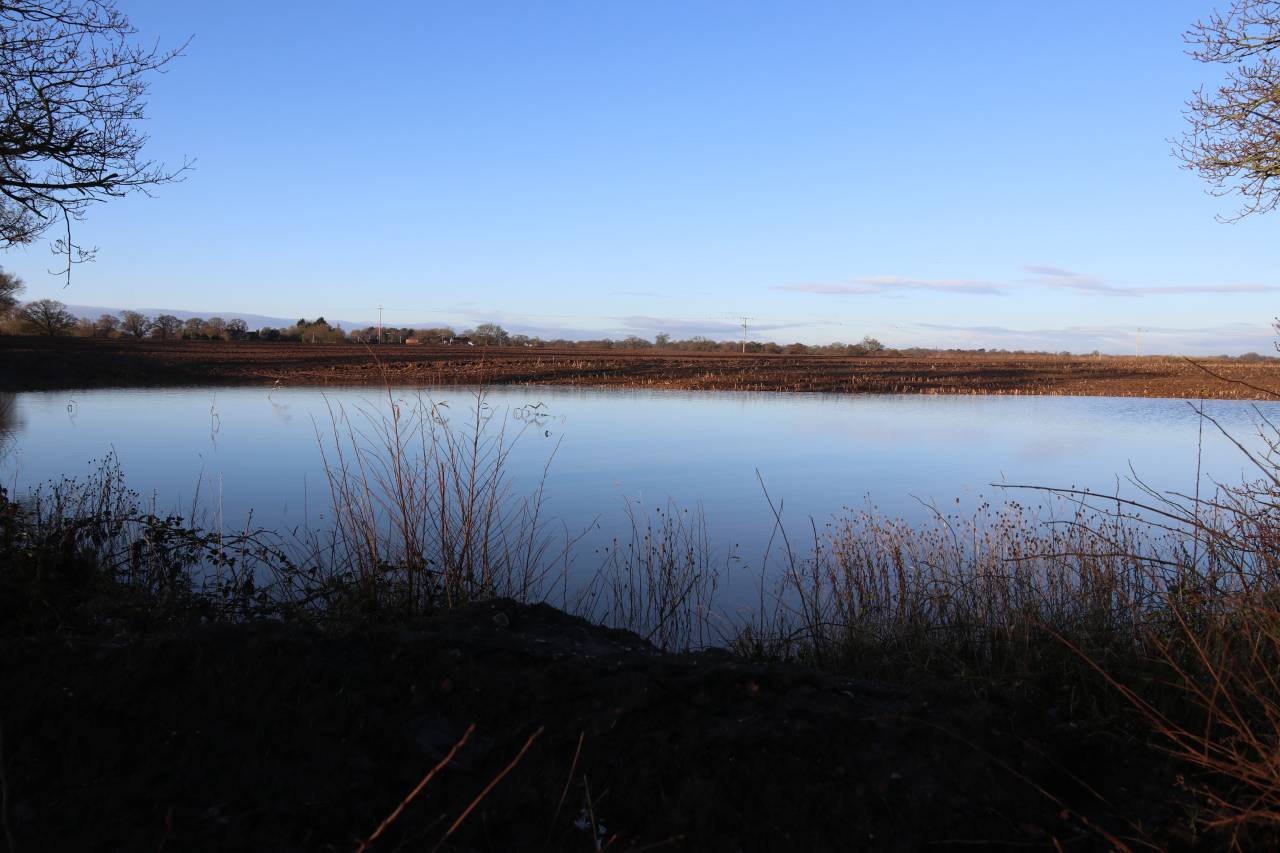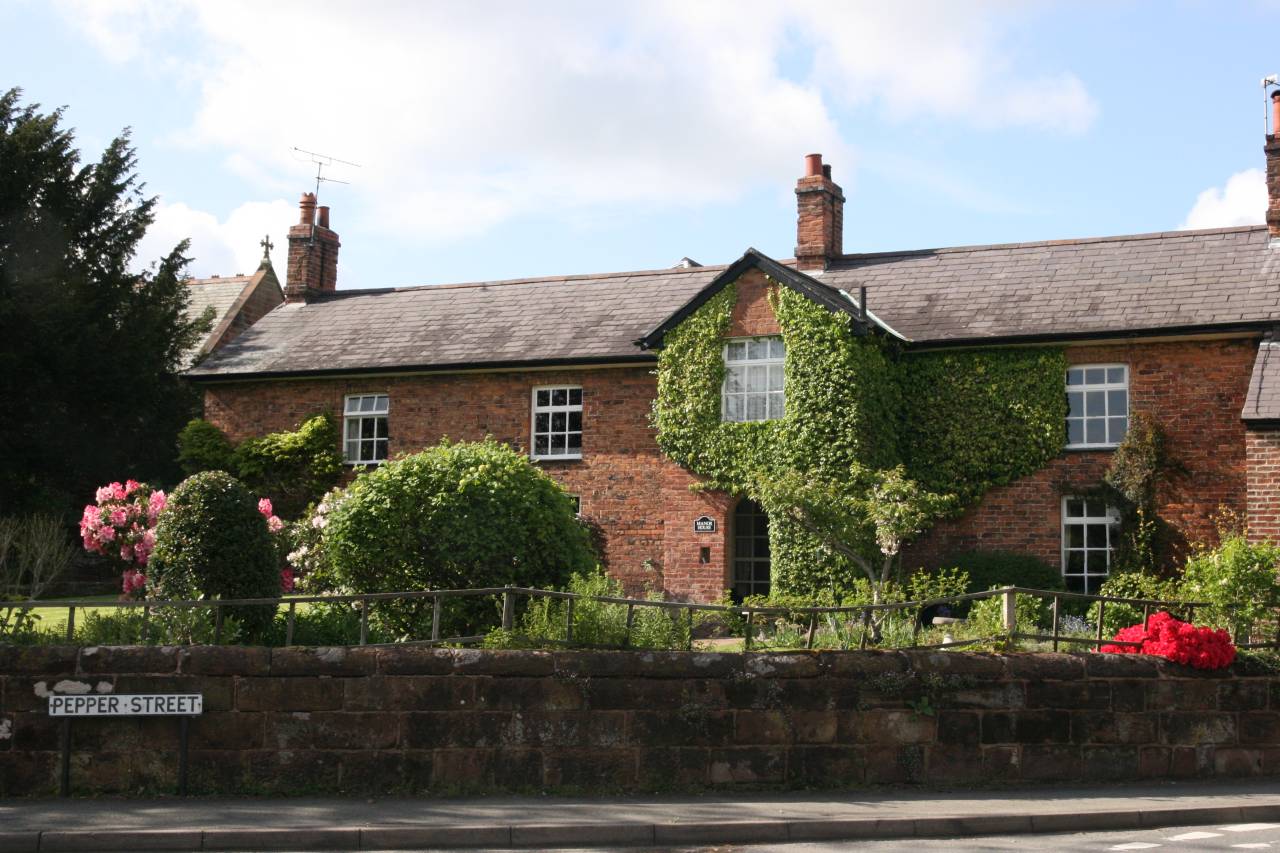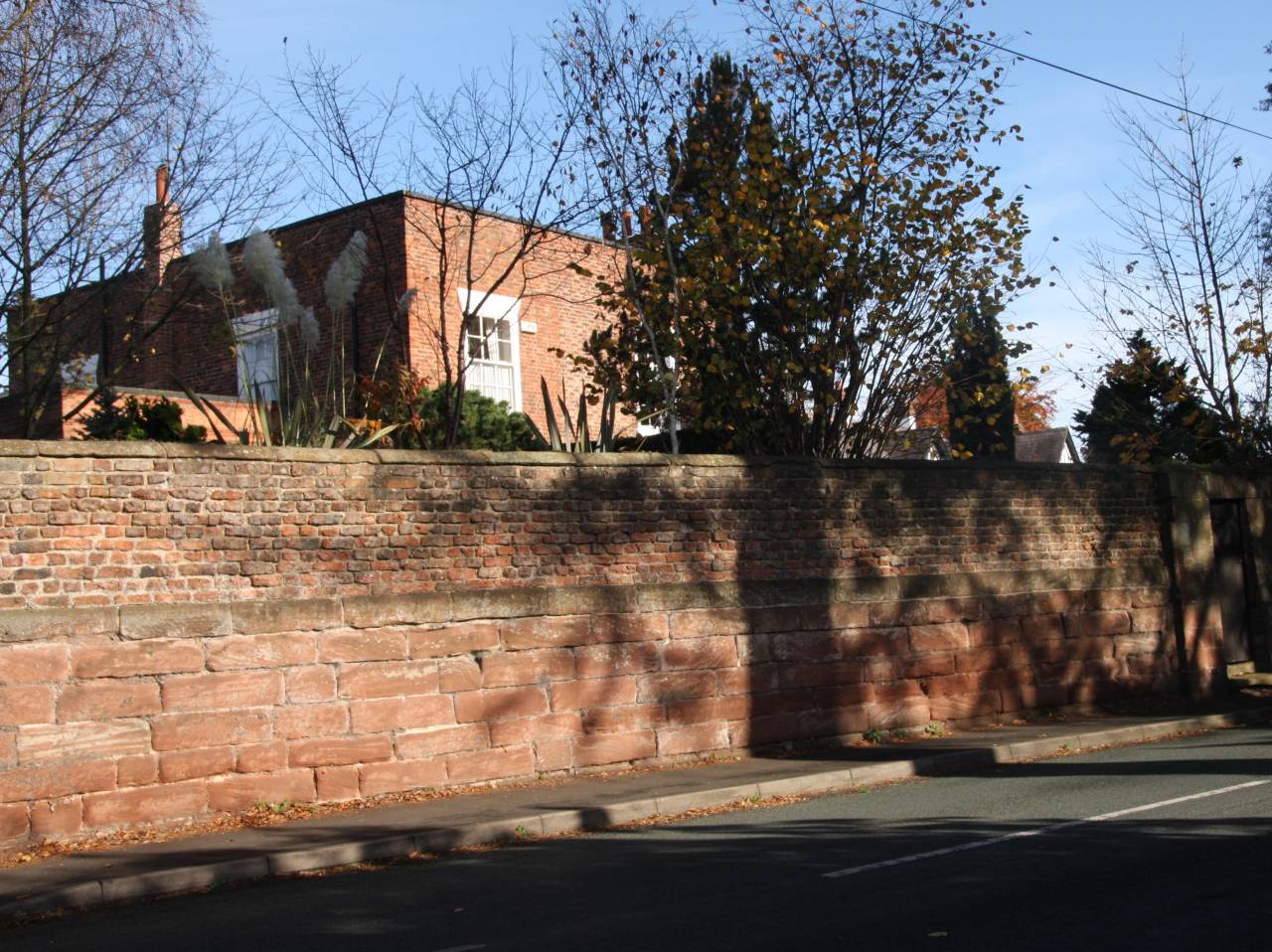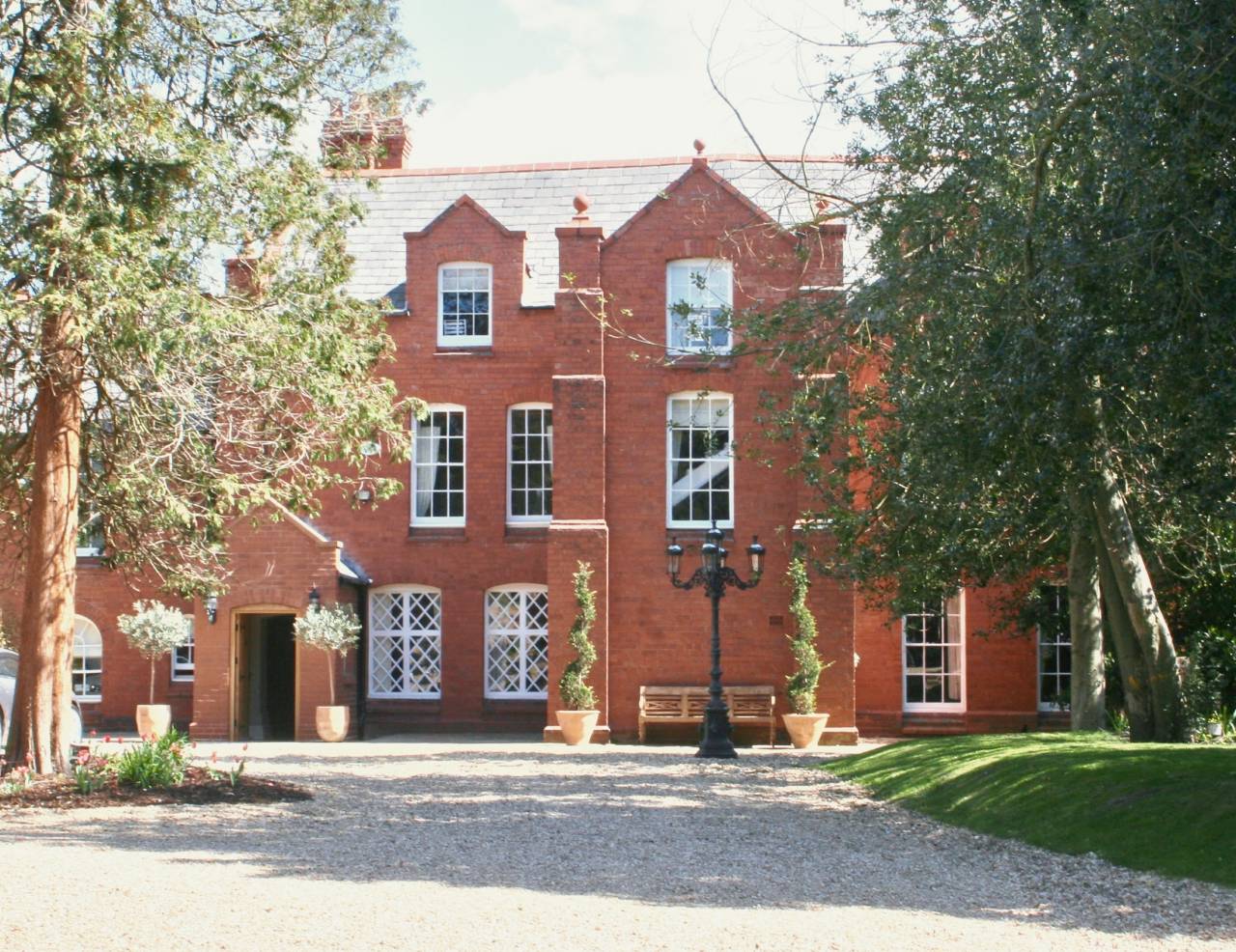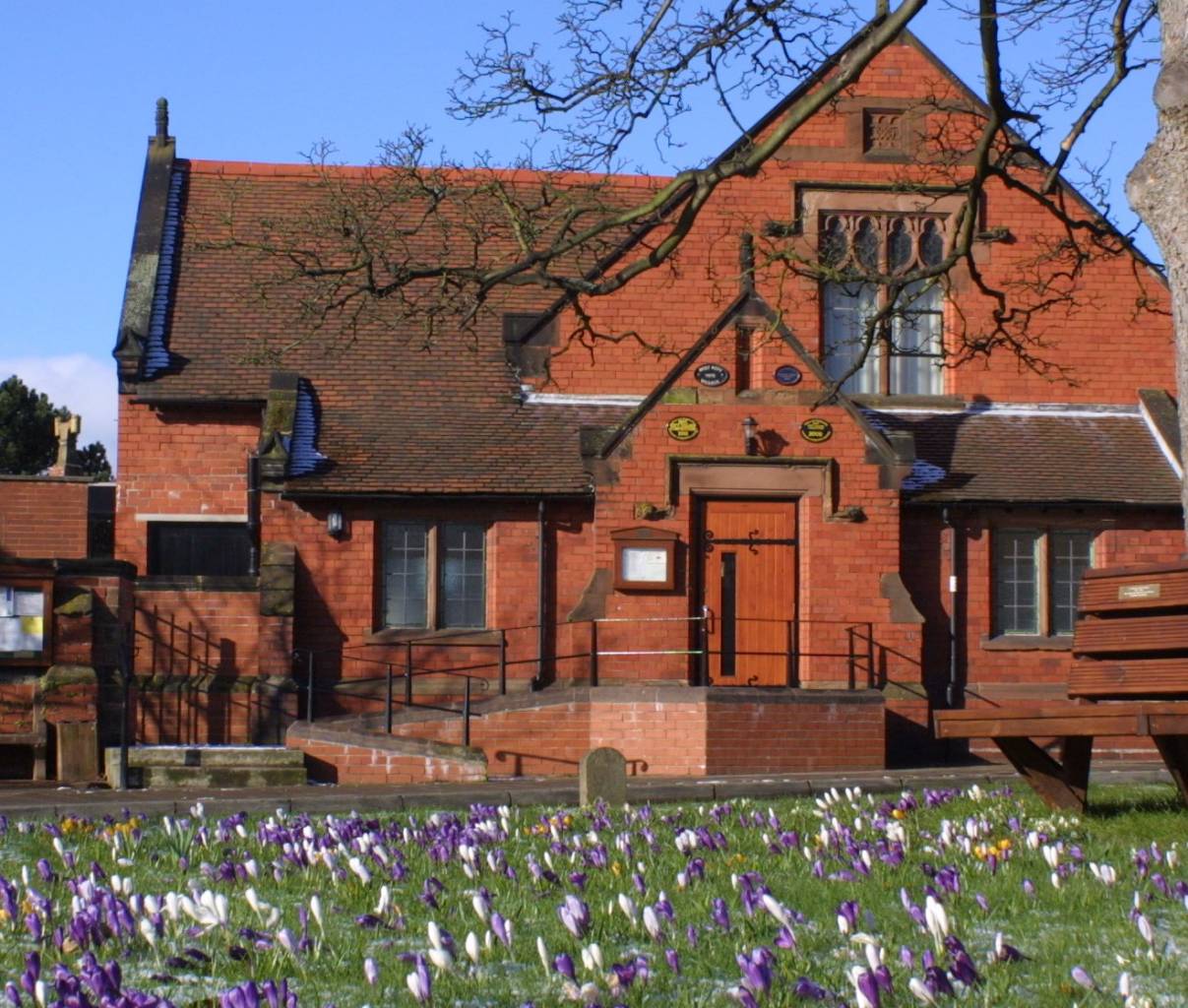The History File
January 2020

David Cummings
Brickmaking in Christleton
A month or so ago I wrote a short article about brick making in Christleton as part of a revised publication about Christleton Pit. Several people have asked me since where the bricks were made, so I’ll try to expand the story, helped by the fact that a pit from a former brick yard site on Grosvenor Estate Land at Cotton Edmunds has recently been found full of water (pictured). In the 1970’s evidence was found of the remains of a brick kiln at the back of Christleton Pit, indicated perhaps by the name “Bricky Lane” that runs alongside it. The hand made bricks produced were made out of the local clay, probably dug close by. The technique for making bricks started with clay being dug in the Autumn and left to weather and break up. In Spring it was mixed together using spades, and trodden down and sieved to remove stones and impurities. It was then moulded in wooden sided moulds, dried in open shelved sheds, and fired in wood or coal fired kilns. The local bricks were more variable in size than present day ones, and often contained tiny pockets of lime and small stones. These bricks can be seen in older houses and cottages around the village, eg The Manor House. They were also used in many of our older walls, with the best examples being seen around the Old Hall in Little Heath Road or on top of a stone base alongside Christleton Hall in Pepper Street. Houses and buildings can often be dated from the bricks used in their construction, a good example being those built with the shiny red Ruabon Bricks which date from circa1885. The Parish Hall is the best example of this in the village. The Old Hall is also an interesting case as this original timber framed building dating from 1603, was encased in this new fashionable red brick in the 1890’s.
For some reason that is not immediately obvious, Christleton bricks were very expensive, and a document found in the Cheshire Archive Office showed an order for 73,000 bricks from Christleton at 9s 2d per 1000. This was more than twice the amount being charged from other local sources notable at Pulford. There were several other areas of the parish that were exploited for the clay, the best example being the Pit at Cotton Edmunds belonging to the Grosvenor Estate mentioned above. A man from Tarvin is recorded as being a brickmaker in Christleton in 1700, whilst Thomas Johnson, born in Oscroft, but living in Birch Heath Lane, is described as a brickmaker in the 1851 Census. The quality of the clay varied, and many of the pits dug were probably a source of marl rather than pure brick making clay. Marl Pits are still found all over the fields in the area, and Christleton was once called the pond capital of Cheshire, with over 450 being found. Such pits or ponds were also used to allow cattle easy access to water, and one was recently excavated at Cotton Edmunds by Farmer Nigel Hill. This has a unique mix of layered red sandstone blocks and a few erratic boulders to provide grip for the cattle as they stooped to drink. The Parish also has many pockets of underlying boulder clay which was brought here in glacial times together with many erratic boulders and stones. As a result some of our footpaths are extremely difficult to use in wet and wintery conditions.
-

Christleton Pit
-

Dry Pit in Christleton, 1976
-

Clay layer
-

Clay removal
-

Christleton bricks
-

Christleton brick
-

Christleton School project
-

Pit at Cottomn Edmunds
-

Pit at Cotton Edmunds, Christleton
-

Cattle access
-

Manor House, Christleton
-

Christleton brick wall
-

Old Hall, Christleton
-

Parish Hall Christleton
